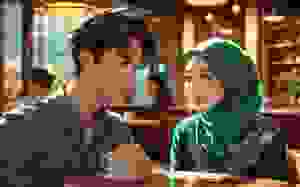All Eyes On Cardinals Who Will Choose Next Pope

(FILE): Cardinals entering the Sistine Chapel before the start of the conclave at the Vatican on March 12, 2013. — AFP PICWITH the death of Pope Francis, Roman Catholics around the globe will start speculating on who among the red-robed cardinals will succeed him.
Given the nature of cardinal appointments Francis made during his papacy, there will inevitably be some expectation that the Argentine pontiff's successor will be another non-European, and that like Francis, he could be another progressive, opposed to the Church's conservative wing.
However, the election process that will take place once Francis is buried is highly secretive and nothing will be certain until white smoke pouring from the chimney of the Sistine Chapel tells the world that a new pope has been picked.
Cardinals are a pontiff's closest collaborators, running key departments at the Vatican and dioceses around the world.
When a pope dies or resigns, those cardinals aged under 80 are eligible to enter a secret conclave to choose the new head of the nearly 1.4 billion-member Roman Catholic Church from among themselves.
The complex vote will reveal if the current cardinals, most of them put there by Francis, believe his embrace of liberal social values and his progressive reform agenda have gone too far and whether a period of retrenchment is needed.
The cardinals will set the date for the start of the conclave after they start arriving in Rome in the coming days.
Only a pope can appoint cardinals and the type of men he chooses can leave his stamp on the Church long after his reign — because of their status as senior clerics and because one of them may end up as pontiff.
There are 252 cardinals, 135 of them cardinal electors under 80, according to the latest Vatican data. Francis appointed 108 of the electors, 22 by his predecessor Benedict and five by John Paul II.
Cardinals are "created" at ceremonies called consistories, where they are given their ring, a red biretta — a square cap — and pledge loyalty to the pope, even if it means shedding blood or sacrificing their lives, as signified by the colour red.
Pope Francis held 10 consistories and with each of them, he increased the chances that his successor will be another non-European, having beefed up the Church in places where it is either a tiny minority or where it is growing faster than in the mostly stagnant West.
The internationalisation of the College of Cardinals began in earnest under Paul VI (1963-1978). It was greatly accelerated by John Paul II (1978-2005), a Pole who was the first non-Italian pope in 455 years.
While Europe still has the largest share of cardinal electors, with about 39 per cent, it is down from 52 per cent in 2013 when Francis became the first Latin American pope. The second largest group of electors is from Asia and Oceania, with about 20 per cent.
Francis appointed more than 20 cardinals from countries that had never previously had a cardinal, nearly all of them from developing countries such as Rwanda, Cape Verde, Tonga, Myanmar, Mongolia and South Sudan, or countries with very few Catholics, such as Sweden.
In some cases he repeatedly overlooked vacancies in big European cities that traditionally had cardinals, to stress that the Church could not be so Euro-centric.
In other places, such as the United States, he bypassed dioceses such as Los Angeles and San Francisco, apparently because they had conservative archbishops.
The more cardinals that a pope names during his reign also increases the possibility that his successor will be someone who holds similar views.
However, this is not always the case, as the cardinals may choose a person theologically dissimilar to his predecessor but considered the best candidate for internal Church reasons or for the historical times in which the election takes place.
Pope Benedict was chosen to succeed John Paul II in part because Benedict had worked with John Paul for two decades and the cardinals wanted continuity.
But many of the same cardinals felt an "outsider" was needed to succeed Benedict, who resigned in 2013, after the "Vatileaks" scandal exposed a dysfunctional central administration, much of it overseen by Italian prelates.
Many cardinals clearly felt the future of Catholicism lay beyond ageing Europe, so they chose Argentina's Jorge Mario Bergoglio as their pontiff — the first non-European pope in nearly 13 centuries.
*The writer Philip Pullella is from Reuters
*The views expressed in this article are the author's own and do not necessarily reflect those of the New Straits Times
Artikel ini hanyalah simpanan cache dari url asal penulis yang berkebarangkalian sudah terlalu lama atau sudah dibuang :
http://malaysiansmustknowthetruth.blogspot.com/2025/04/all-eyes-on-cardinals-who-will-choose.html
 PING BABAB : Raksasa Aggregator Malaysia
PING BABAB : Raksasa Aggregator Malaysia


























